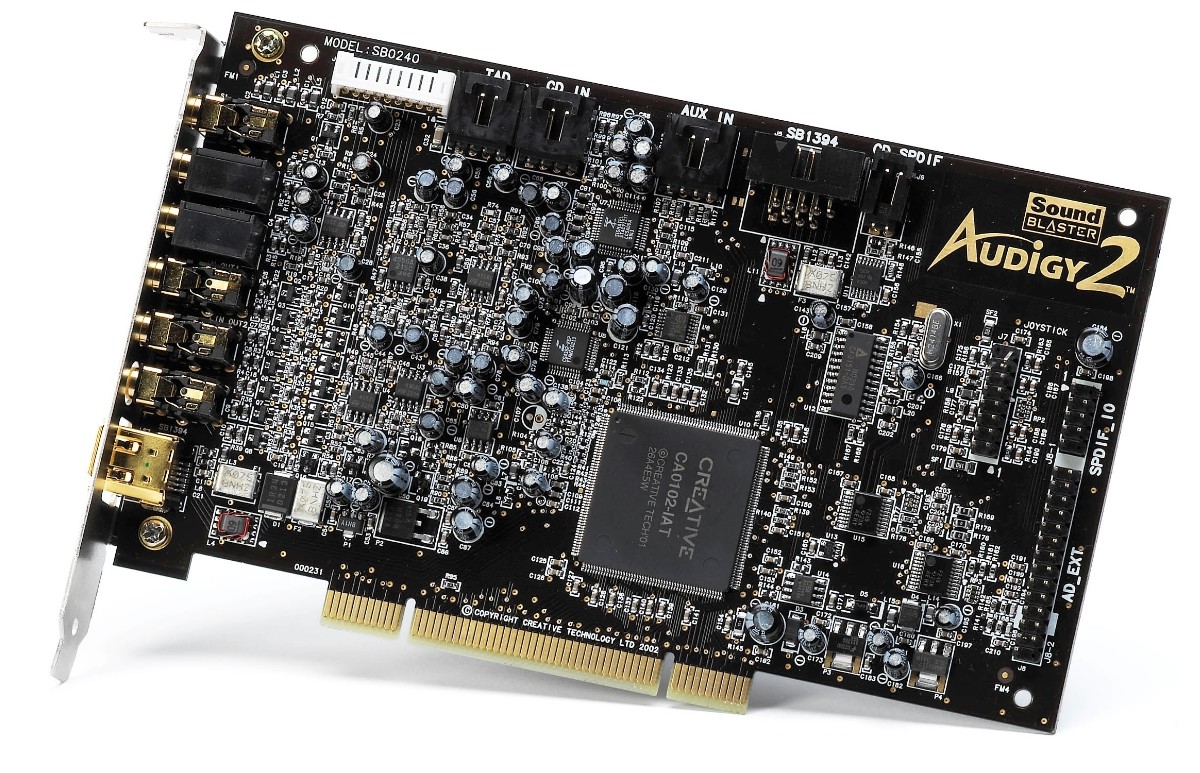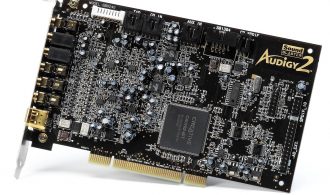For a long time we only heard beeps. The sounds that came out of our 8-bit computers and those early PCs left almost everything to the imagination, but little by little the industry was realizing that audio was really important. And then Sound Blaster came and changed everything .
This family of sound cards became the de facto standard for the PC industry, and for years they dominated a market that ended up leaving them almost totally on the side .
 From the whistles to the magic of ‘Paula’
From the whistles to the magic of ‘Paula’
The PC makers did not care much about the sound. Not at least during a good time when the beeps dominated our lives. Even limited 8-bit micro-computers such as the Spectrum or the C64 (the best of them all, which was the one who had this sign for it ) began to demonstrate the game that could give a good melody.
In fact even with those limited sound chips, those computers gave rise to the legendary chiptunes , those electronic melodies synthesized for 8-bit machines that, eye, are still very fashionable nowadays .
IBM began to realize where the shots might go and made a small effort before they stopped saying goodbye to their PC. The launch of PCjr 1984 surprised by the presence of Texas Instruments SN76489 chip, which ended up being used also in the Sega Master System and Genesis and that gave these teams a surprising ability in this area. A capacity that yes, was condemned by its limited compatibility with PC software or its reduced power, which made many games of the time could not work well in PCjr.
That failure meant that the personal computers that conquered the world were for years burdened in the audio field. Here the first clear revolution was shown by two machines. First, the Atari ST , with its ‘Pokey’ chip that made this machine a fantastic alternative for music producers who could enjoy their MIDI port for composition.
Second, the even more fantastic Amiga 500 (guess who had one of these?), Which was a prodigy for many things but also for its use of dedicated chips, one of which, called ‘Paula’ was responsible for offering audio support of four channels and turned Amiga into the visible face of that “multimedia” revolution that computer science experienced in the late 80’s and early 90’s.
And then 1989 arrived, and out of nowhere there seemed to be a Singaporean company called Creative Technology . And everything changed for audio on PCs.
The Sound Blaster brand is born
As indicated in the fantastic historical review of these cards in Tedium , Creative Technology was not the first to try to provide PC users with a much more remarkable quality in terms of sound.
In fact in 1987 a Canadian company called AdLib started offering products based on the ISA expansion slots. His sound card had a YM3812 FM chip from Yamaha that allowed to create synthesized music of good quality, but it had an important limitation: it did not have support for the PCM modulation that was susan for example for the reproduction of audio CDs.
Precisely the proposal of Creative Technology was based on improving the same AdLib product , whose Yamaha chip did not have much less exclusive. What they did in the Singaporean company was precisely to launch a card on the market that differed from that of its competitor in that it did have full PCM support.
That joined other decisive factors. Manufacturing costs were much lowerfor Creative Technology in Singapore than for AdLib in Canada, but also in Creative they reached agreements with several videogame developers to guarantee that they would support the Sound Blaster.
Their engineers provided device drivers to all those companies and developers, but they also added a port for joystick games , something that gave players another powerful reason to choose these cards. The Sound Blaster family shattered the competition, and ended up dominating the market for more than a decade.
The democratization of sound ended with Sound Blaster
Creative Technology would actually end up being much better known by Creative Labs, its brand in the United States and other countries. That empire of the sound for PCs maintained its relevance during many years in which the new versions of its sound cards followed each other without stopping.
However, that would end the support problems that Microsoft Windows 95 would cause, the operating system that changed the hardware support model and that eliminated the importance for Windows users of compatibility with Sound Blasters .
That was added to the decisive factor: the manufacturers of motherboards released all kinds of products with integrated audio chips , something that made it unnecessary to acquire independent cards for a section that already fulfilled sufficiently well on most PCs.
That turned Creative Labs into a company with products aimed at a smaller market: that of players and fans of the world of sound who were looking for special features on these sound cards. Products such as Sound Blaster Live !, Audigy or X-Fi ended up being oriented to a niche that remained true to these products and that had been unmarked by the end user, who was satisfied with the integrated chips.
Creative Labs (or Creative Technology) continues to operate with products related to sound with its Sound Blaster brand . In 2017 they released their Sound BlasterX AE-5, for example, and they have also opted for the “audiophile television” segment with a sound bar like the https://us.creative.com/soniccarrier/ that appeared with an exorbitant price of almost 6,000 dollars.
Much has changed with the Sound Blaster, but these cards have already become part of the history of technology . If you want to go deeper into this topic, maybe you want to enjoy the documentary ‘ Beep: A Documentary History of Game Sound ‘ or buy the book ‘https://www.amazon.com/Sound-Blaster-Official-Book-Disk/dp/ 0078819075 ‘in which the history of this family of sound cards is told in great detail.

